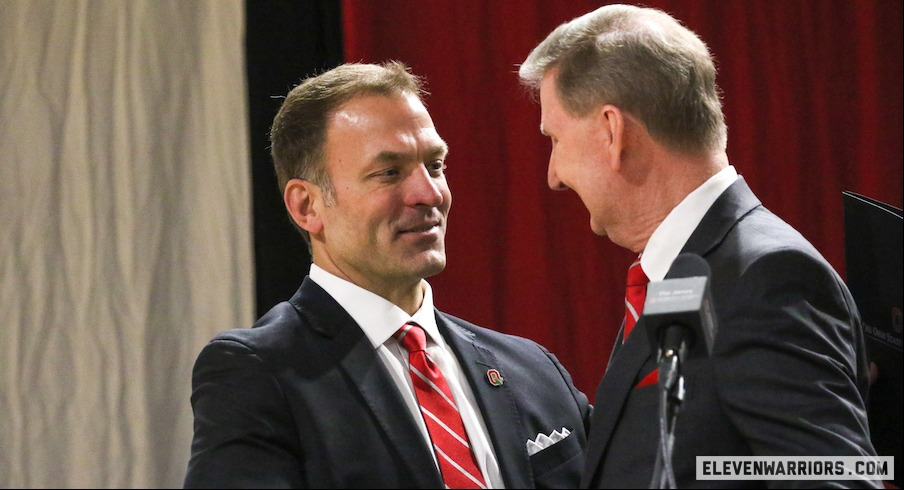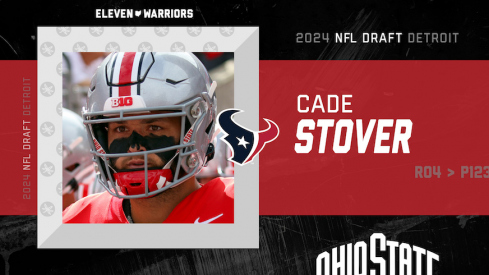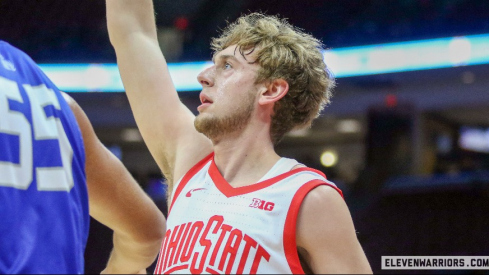The rapidly changing nature of college sports has been on full display over the past week.
On Tuesday, the College Football Playoff board of managers unanimously approved a reduction in automatic qualifiers from six conference champions down to five for the upcoming 12-team playoff. Within hours of that change, reports surfaced that CFP leaders were already discussing a potential expansion to 14 teams in 2026, with the Big Ten and SEC reportedly pushing for their conferences to receive as many as three or four guaranteed berths each.
Thursday brought news of potential changes to college football’s recruiting calendar as it was reported that early signing day could be moved up to the first week of December, a summer signing day could also be added, the December travel period for recruiting could be eliminated and the winter transfer window could potentially be moved or even eliminated.
A seismic change for college sports, at least temporarily, came Friday when a federal judge issued a preliminary injunction that prevents the NCAA from enforcing its ban on the use of NIL as a recruiting inducement, opening the door for collectives and boosters to make deals with recruits without the risk of NCAA sanctions for their schools.
For better or for worse, the college sports landscape has changed drastically over the past few years as athletes have become able to make money off of their names, images and likenesses and transfer without sitting out. There will likely be more big changes to come over the next few years, potentially including the end of the NCAA’s amateurism model altogether if schools are either permitted or mandated by law to begin sharing revenues with their athletes.
Ohio State’s new leaders know they need to embrace change.
During his introductory press conference as Ohio State’s new athletic director last month, Ross Bjork said leaders in college athletics need to come together to figure out a new model for college sports before more changes are forced upon them.
“We must create a model that intersects sports and the academy, the education academy. We need a model that looks after each individual sport – our athletes, our recruiting calendars and fair competition. We need to chart a new course for the financial arrangement, the financial agreement between the athlete and the institution,” Bjork said. “We can call that whatever we want, but that's where we're going. We need to recreate that model, period.
“It's past time to sit down with our athletes, understand what they want out of this experience. And some may call that bargaining, negotiating, it's called communicating and it's called coming up with the right plan. We need to deconstruct and recreate the antiquated NCAA governance and divisional structure. At a minimum, there needs to be consolidation of the highest resource programs around a new financial and governance model.
“We either take action now or action will continue to be taken upon us. Enough conversations, enough lobbying, enough legal battles, it's time that we make a plan as an enterprise, and I look forward to locking arms with (Big Ten commissioner Tony) Petitti. And Ohio State and the Big Ten can lead the way along with the rest of our national colleagues.”
Ted Carter, who became Ohio State’s university president in January, said he hired Bjork as Ohio State’s new athletic director because he felt Bjork would be up to the task of leading OSU through college sports’ impending changes.
“I needed someone that could come in and understand this ever-changing landscape of collegiate athletics. Name, image, and likeness, potential revenue sharing, the changing landscape of conferences, (conference) expansion, expansion of College Football Playoff, and even NCAA structure and governance,” Carter said.
While the NCAA was notoriously hesitant to make changes under former president Mark Emmert, new NCAA president Charlie Baker put forth a proposal in December that would create a new subdivision for the highest-resource institutions in Division I, allowing them to directly compensate their athletes through an “enhanced educational trust fund.” In Baker’s proposal, those schools would have the freedom to create their own rules separate from the rest of Division I and would be allowed to enter into NIL deals with their athletes directly.
Carter said he doesn’t think the actual model will look exactly like what Baker proposed, but said he views that as “a good way to start the conversation.” And he believes the larger Division I athletic departments do need to have their own model separate from smaller Division I schools.
“The ability to operate Division I, Division II, Division III, even FBS compared to the Power 5 or the A5 just in college football, there's too much of a difference, and there's going to have to be some separation there,” Carter said.
“We either take action now or action will continue to be taken upon us. Enough conversations, enough lobbying, enough legal battles, it's time that we make a plan as an enterprise.”– Ross Bjork on changing the college sports model
Neither Bjork nor Carter knows exactly what the future of college sports will look like. But they both want to have an active role in the conversations that will shape that future, and Bjork thinks it’s important to be proactive rather than reactive as further changes come.
“At Texas A&M, we have an administrative leadership team and we talk about these things all the time. And one of the questions was, what are you sort of looking forward to the most? And I said clarity. Whatever it is, let's get there,” Bjork said. “Let's have clarity of the model. Clarity of divisions. Clarity of the revenue between the athlete and the institution. Let's have clarity because all of this confusion and all, what we're putting our coaches through right now with rosters and transfers and NIL, that's not sustainable for them as a human being. Let's get to clarity. Let's have a model that's legally defensible. And so that's what I'm looking forward to. Let's get there. Because if we get stuff done, we can get there.”
Bjork and Carter also believe it’s important for both Ohio State and the Big Ten to use the power that they hold as institutions in those conversations.
“Some universities should have a little bit of different weight. And this is not trying to be bigger than somebody else. But this university has been at the top of performance across all of our sports, all of our programs, compared to our peers,” Carter said. “We won't necessarily have a bigger voice in there, but our voice should matter.”
Over the past month since Bjork was introduced as Ohio State’s athletic director, it’s become increasingly clear that the Big Ten and SEC will play a leading role in determining the future of college sports. The two conferences announced earlier this month that they had formed a joint advisory group “to address the significant challenges facing college athletics and the opportunities for the betterment of the student-athlete experience.”
Bjork, who spent the last 12 years in the SEC as the athletic director at Texas A&M and Ole Miss, believes it’s only right that those two conferences should have a bigger say than everyone else in determining the future of college sports for the highest-resource programs.
“Clearly, there are two leagues who have distinguished themselves by far from an exposure (standpoint). (Outgoing athletic director Gene Smith) and I were talking about the TV ratings from this past year, it's the Big Ten and the SEC. So there's no doubt that it's going that direction,” Bjork said. “This coming year, the SEC and the Big Ten will be 34 programs. So that's half of the Power 5, right? So we are the two leaders, our conferences are, and we'll have a seat at that table.
“I think we have to shape it and we have to monitor what's going to happen within the landscape and TV contracts and the NCAA proposal and College Football Playoff expansion. People are going to go around the room; at the end of the day, they're going to ask the Big Ten and the SEC for the last word. And that's just the way it is right now.”
“Some universities should have a little bit of different weight ... this university has been at the top of performance across all of our sports, all of our programs, compared to our peers.”– Ted Carter on Ohio State’s role in shaping the future of college sports
While a complete overhaul of the NCAA structure isn’t imminent quite yet, there are changes that can be made to improve college sports within the current structure, such as the aforementioned adjustments to the football recruiting calendar. Bjork won’t be the only one from Ohio State pushing for changes there, as Ohio State football coach Ryan Day has advocated for changes to the recruiting calendar both in public comments and at last month’s AFCA Convention.
“We've got to figure out a way to make, first off, December work. December is not working,” Day said in December before the Cotton Bowl. “We all need to come together and make some hard decisions … I don't think we can just patch it up and say, ‘Let's put a patch on this right here.’ We've got to look at this thing from a big picture and start from scratch and go from there. And there's a lot that goes with that.”
Day correctly predicted earlier this month that there would likely be more changes to come on the NIL front as this year progressed. But he says there’s been great alignment between the football program and Ohio State’s administration in adapting to those changes, and he expects that to continue as the landscape of college sports changes by the day.
“It’s changed in the last year, it changed in December, and it's probably going to change again in May. So it's something that we all have to adapt to,” Day said on Feb. 7. “And we're working hard, I think everybody involved has been working really hard to make sure that we’re where we need to be to be competitive. And so we'll keep trying to adapt the best we can, knowing that I'm sure there are changes coming again in the next couple of months.”


